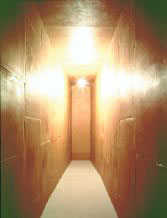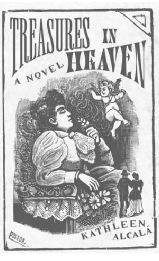IN THIS HIGHLY ACCLAIMED short-story collection CivilWarLand in Bad Decline, George Saunders introduced us to his AlienNation: a franchised, merchandised, strip-malled country where the simulacrum has become real (just as the Postmodernists promised), leaving us with nothing but dinners at “Melvin’s Pasta Lair” and “Overcoming One’s Woes Via Hopeful Mental Imaging” seminars. More Reno (or Burien) than Vegas, the book’s theme-park landscape—peopled with “Verisimilitude Inspectors,” “re-enactors,” and players of virtual reality games like “Violated Prom Queen”— conjures a dystopic future eerily familiar to anyone who’s ever had the misfortune of working at a TGI Friday’s. Saunders’ empathy and mordant wit turned what could have been a “Three Stooges Meet Kurt Vonnegut in Westworld” caricature or a “Co-opted by the Man” jeremiad ࠬa Thomas Frank into a darkly funny, unexpectedly poignant portrait of folks trying to keep their dignity and still pay the rent in a very Ugly America.
Pastoralia
by George Saunders (River Head Books, $22.95)
SAUNDERS RETURNS to the theme park in his sophomore effort, Pastoralia. The unnamed protagonist of the title story works in a prefab “cave,” communicating with grunts and pretending to eat bugs, while his rebellious coworker Janet smokes and calls a tourist a “dumb suckass.” The unseen management, via fax machine, encourages our anonymous character to detail Janet’s “inauthenticity” on his Daily Partner Performance Evaluation Form, since it’s the only way they can fire her without getting sued. Saunders’ keen ear for psychobabble is still very much in evidence here—the unnamed’s mantra is “I’m Thinking Positive/Saying Positive”—but the story itself drags, perhaps because this go-round focuses less on the absurdity of the park than on the ethical conflict engendered by it. (The condensed version that appeared in The New Yorker is much better.)
The other stories in Pastoralia likewise move out of Pynchon territory and creep slowly into Flannery O’Connor’s; in the last three, the author eschews the funhouse entirely for the neurotic joys of inner space. “The End of FIRPO in This World,” in particular, is a gem, perfectly capturing a boy’s sweet fantasies of revenge (“he would send them on secret missions such as putting hideous boogers of assassination in Lester Finn’s thermos. . . .”). By the final story, “The Falls,” we’re completely inside the heads of two quintessential Saunders “heroes”: a pathological worrywart and a wannabe writer with delusions of grandeur, both of whom must decide whether to take uncharacteristic action to save two drowning girls. While not as startlingly original as CivilWarLand, Pastoralia marks the coming of age of a writer worth watching.








